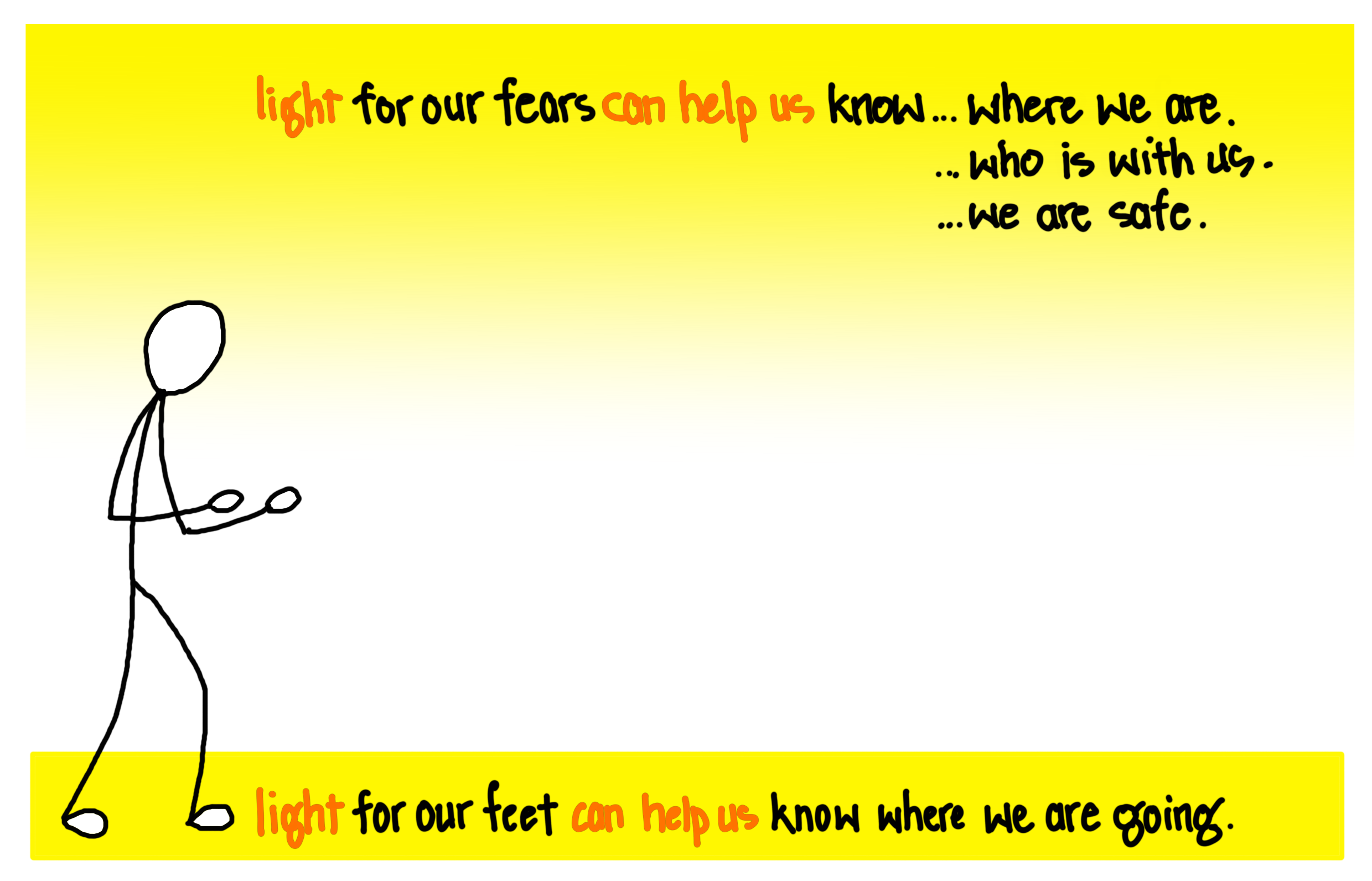If light itself is a gift, what kind of gift is it? Is it a new pair of socks, useful but not particularly exciting, or new electronics that are exciting now but will be obsolete in a few short years? Is light something handmade with love, with no monetary value but nonetheless priceless?
Light, which I consider a gift, can be many things, and I like to think of the benefits of light as promises. Perhaps in the same way that socks promise warm feet (but most be worn to deliver the promise) or new electronics promise some kind of pleasure (but must be used to deliver the promise), light promises to help us in nearly every aspect of our lives. Like all these more ordinary gifts, light must also be used correctly to deliver the promise.
A gift of socks that promises warm feet will not deliver if those socks are used on your nose. Light in our homes is far too often like this…the wrong thing in the wrong place and the wrong time.
In earlier posts of this series I explored darkness and the first gift of light: light (for our hands) can help us see what we are doing so we can do it better. Today I spent some time thinking about the second promise: light (for our feet and fears) can help us know more.

The idea that light can help relieve fears is not a concept that I have pondered at great length, but a new thought that surfaced as a revisit the promises of light. But light that helps relieve our fears is primal in its necessity. And where is that light needed? Nearly everywhere, though it need not be terribly bright. A flashlight at night adds an incredible amount of safety when traversing a campground; a little light on the floor helps us avoid trip hazards and painful toys. This is light down low is for both our feet and our fears.
We also need light out ahead of us that illuminates other people or the way ahead, call this light for the unknown. It is helpful to see the faces of those around us and to know the size and layout of a room or outdoor area. Perhaps it makes more sense to call this all light for faces and places instead of fear and feet. Either way, the concept is the same.
I was watching a movie recently where a group of soldiers was working their way through the cargo hold of a spaceship. Someone- or something- was hunting the soldiers in the darkness. As is the way in these instances, the threat was not ahead of the heroes, but above.
Perhaps we have a desire for light everywhere, like daytime, so that we can see real threats and dispel imagined ones. The trick is that daytime light at night is a disaster for our bodies, our wallets, and our planet. So we need to be selective and intelligent in our application of light above our heads, just as we do everywhere else. What kind of light- or light fixtures- do we need to address our fears and illuminate the way for our feet?
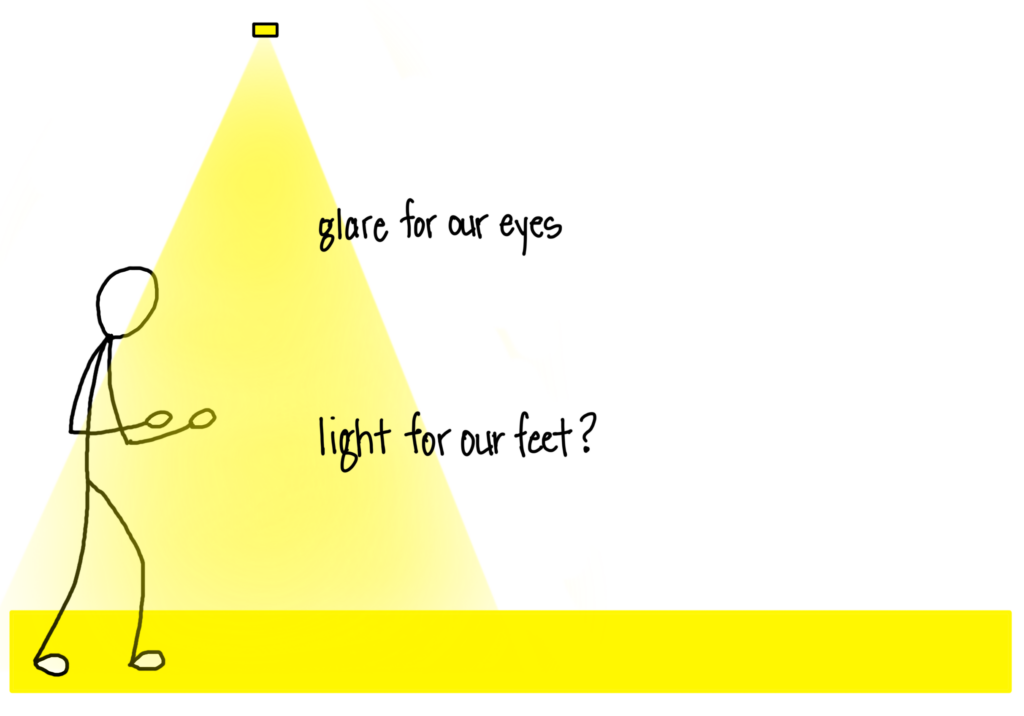
Most light in our homes will eventually find its way to our feet. Chandeliers, table lamps, recessed light, or any ceiling light generally casts light downwards, so it is easy to think we do not need light specifically for our feet. When we consider how our eyes work and the kind of light our bodies need (or need to avoid) to foster good sleep, however, we see that most of these overhead lights will cause problems.
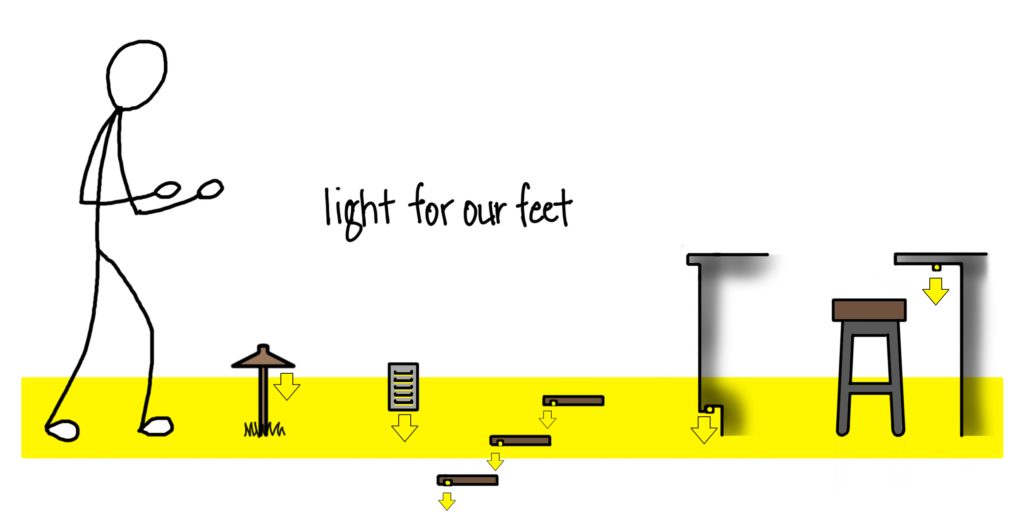
If you have ever walked a beautifully illuminated garden at night, you likely appreciated lights that shined away from your eyes and gently illuminated the paths. This low-down light is perfect for delivering a sense of comfort and safety while minimizing glare and sleep disruption. Inside the home, we also can benefit from path lights, though installing a series of little garden lights is less than practical. Instead, we can use recessed step lights, light underneath stair treads, toe kick lights, and light below counters and bar-tops to deliver the same effect.
While I was sketching for this post, I meandered a bit on the path idea and created another series of illustrations. Let’s take a look at these before we get to light for our fears (above our heads and ahead of us).
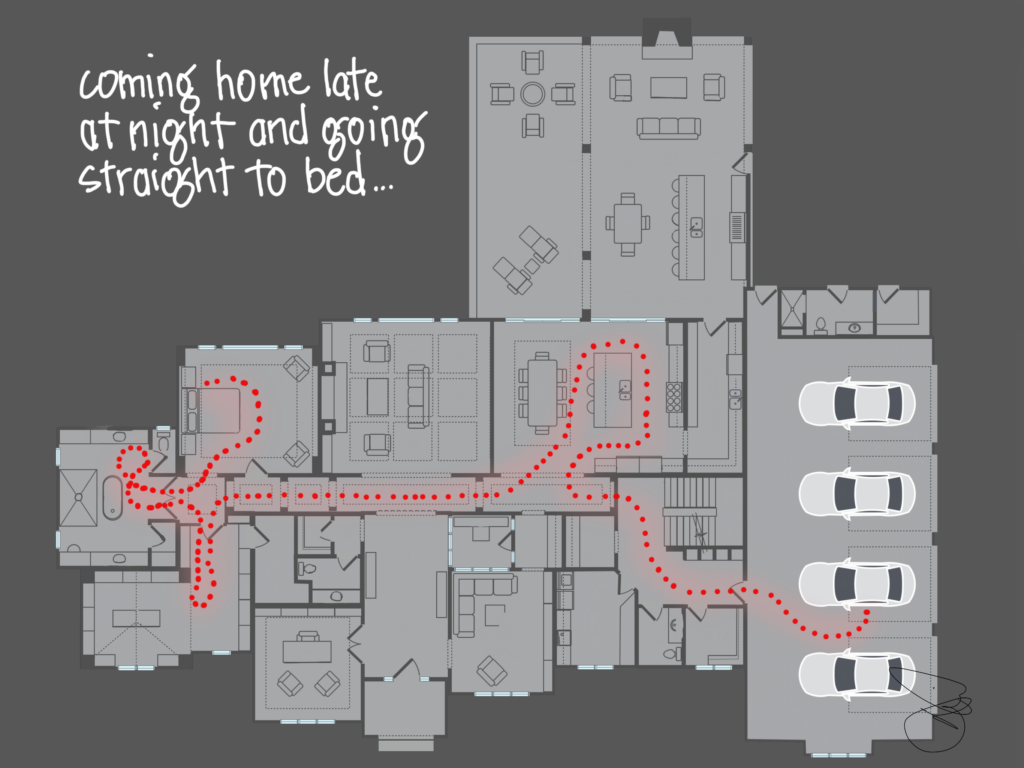
Imagine that you return home late one night from a business trip to your sizable custom home. You park the car in the garage, get a drink of water in the kitchen, drop you clothes in the closet, take out your contact lenses, and hop in bed as quickly and quietly as possible.
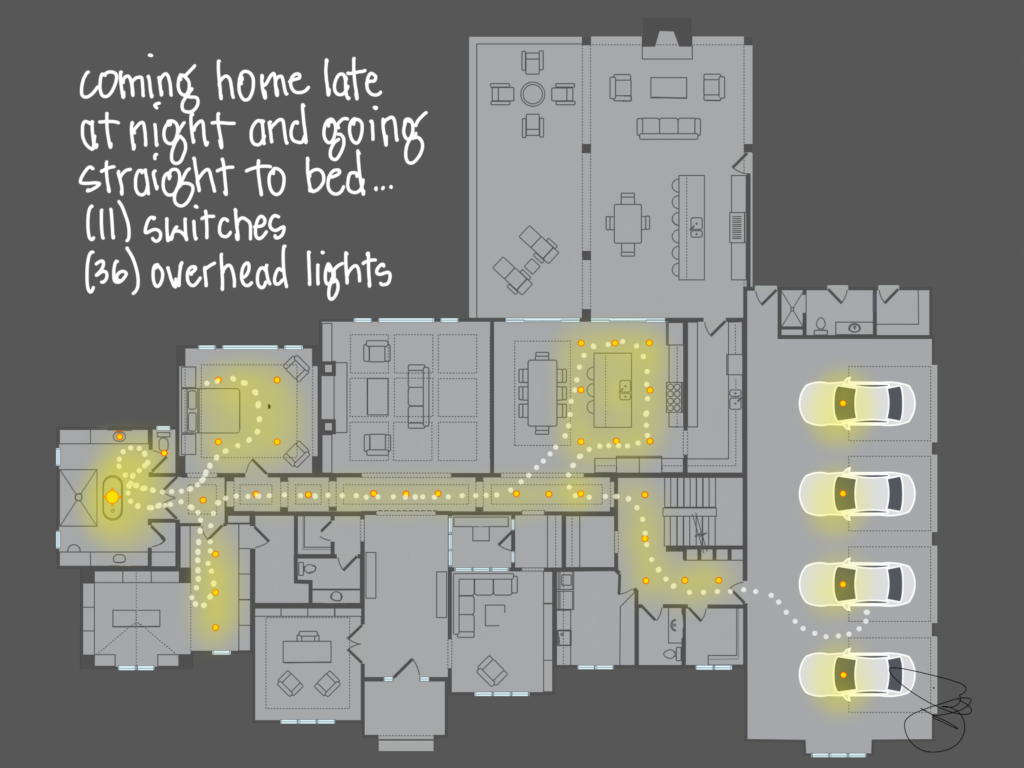
In a home with typical illumination, there will be lights in the garage, mudroom, halls, kitchen, closet, bathroom, water closet, and bedroom. This quick walk through the house may involve eleven switches and thirty-six overhead lights, each one a source of potential glare and sleep disruption. There is a better way.
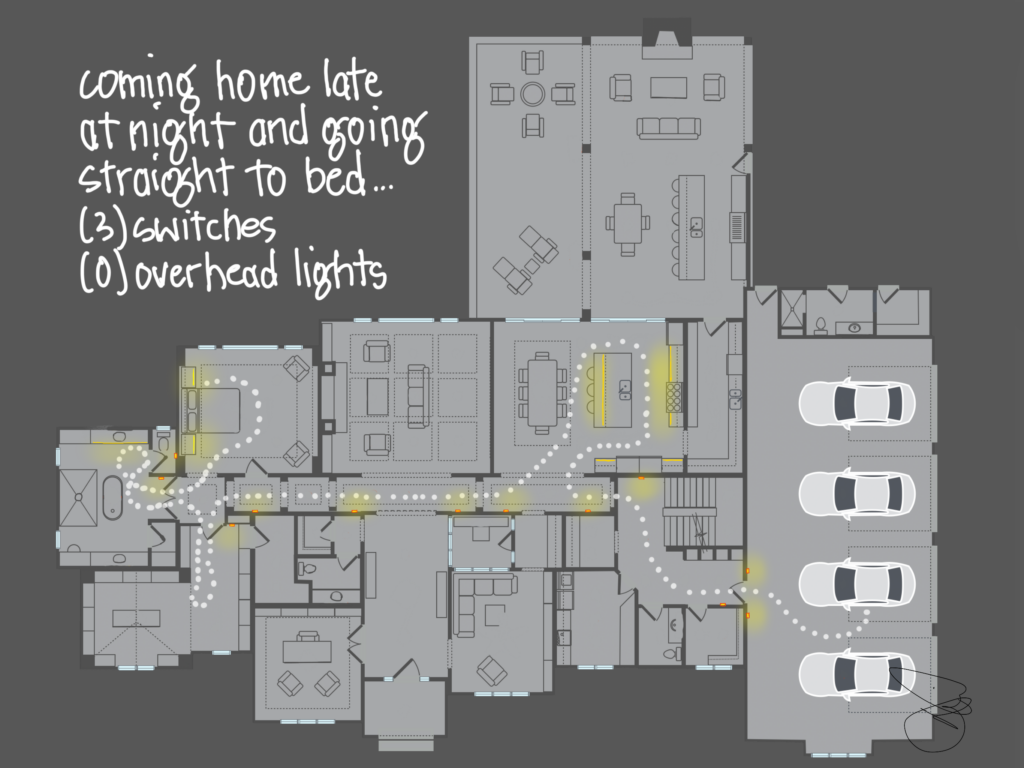
Now imagine you come home to a well-lit house that has light for your feet so you can know where you are going, get there safely, and do so with as little light as possible to protect your sleep. This home perhaps has a few switches, but the primary path is illuminated either constantly or by motion sensors. Step lights, toe kick lighting, light underneath the bar top, light under vanities, and light under bedside tables makes this path functional and beautiful.
We get a lot of quizzical stares when we suggest this kind of light in a home. For those brave enough to try something new, we usually get a response later that these are among their favorite lights in the entire home.
If that’s light for our feet, what about light for our fears?
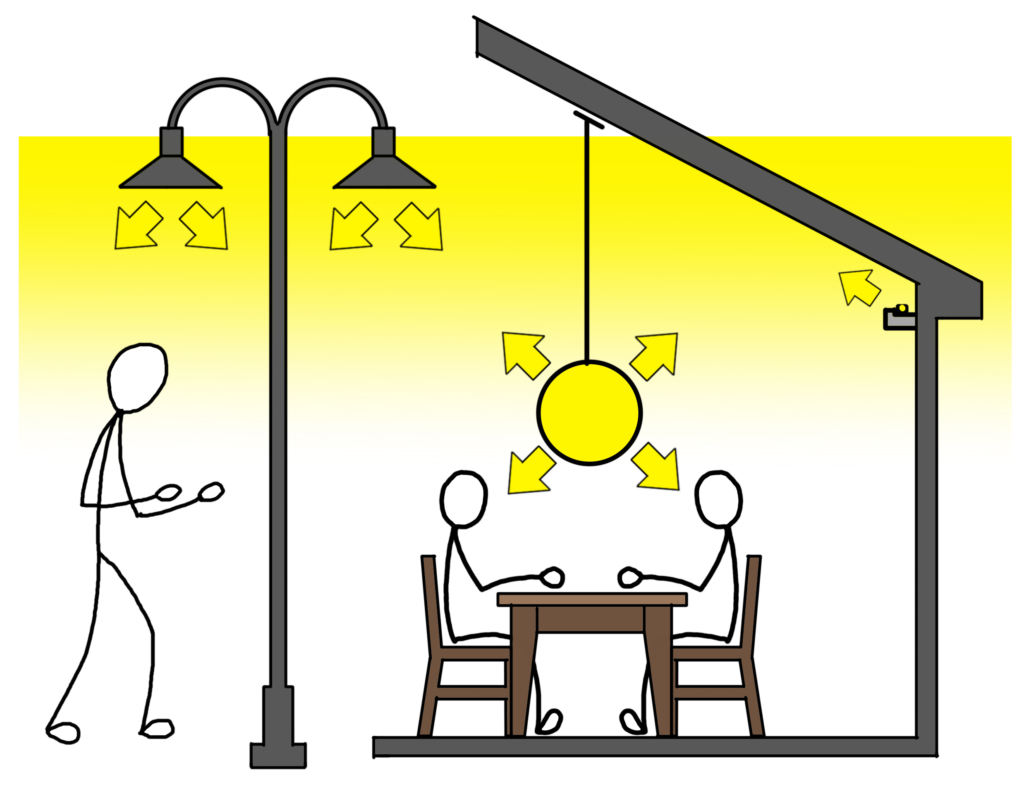
Light for our fears that helps us know where we are and who is with us, however, is fundamentally different than path lighting at night. This light for our fears, or faces and places, should still be soft and glare-free, but should be cast softly in virtually every direction. Some call this ambient light, but that is not the only form it takes. Outside, post-top fixtures help us see approaching pedestrians. Inside, soft indirect light bounced off the ceiling from coves or above cabinets can gently illuminate faces and places and help us feel comfortable. The same can be said for sitting at a dining room table – a soft glow from the right kind of pendant does more than just illuminate our food when it softens the faces and reveals the smiles of our guests.
Light can help us know more. It can help us know where we are, where we are going, what is around us, and who is with us. This is light for our feet that stays out of our eyes, and light that softens shadows and soothes our fears. These kinds of light and the associated promises cannot be delivered in a space illuminated only from the ceiling.
Layers of light are not inherently good or bad, and that is one reason to focus instead on delivering the promises of light to our lives. Because light can help us live better.
Read more of the Light Can Help Us series HERE.
